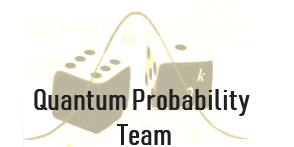Quantum Information
Quantum Information Theory treats any problem related to transmission of information through quantum systems, to storing, encoding, decoding information in quantum systems, to quantify uncertainty... Again foundations of quantum mechanics are relevant and measurement theory is involved in modelling decoding and error correction procedures, at least.
- Entropic bounds on information. In extracting information from quantum carriers, theoretical limits appear which involve peculiarities of quantum mechanics and of quantum measurements. These limits can be formalized as bounds on entropic quantities, which "measure" the information content in a strict analogy with classical information theory [Chapter 6 of BG09a], [BL08, BL07, BL06b, BL06a, BL05, BL04c, Ba01].
- Quantum error correction by feedback. Correction of errors occurred from sending quantum information trough a noisy quantum channel can be based on classical information obtained by measurements on the channel (the environment). If the environment is continuously monitored, the information obtained by the measurement can be used to control the system and correct the errors by feedback in real time [GW04, GW03].
- Measurement uncertainty. In recent years the status of the Heisenberg's uncertainty principle has been highly debated and new formulations have been developed. The old axiomatization provided a restriction on the possible preparations of a quantum system, while the idea of Heisenberg had more to do with the trade-off between accuracy and disturbance in a measurement. We developed a formulation of this aspect of the uncertainty principle based on the use of relative entropy: when incompatible observables are approximatively jointly measured, there is un unavoidable information loss and the relative entropy is the right quantity to quantify this loss. Our approach allows to characterize the optimal approximating joint measurements and extends to more than two incompatible observables, and even to infinitely many. Moreover, our measurement uncertainty relations are based on the introduction of a single incompatibility index and this fact allows for a comparison of the incompatibility content of different sets of target observables [BGT18, BG18, BGT17].

